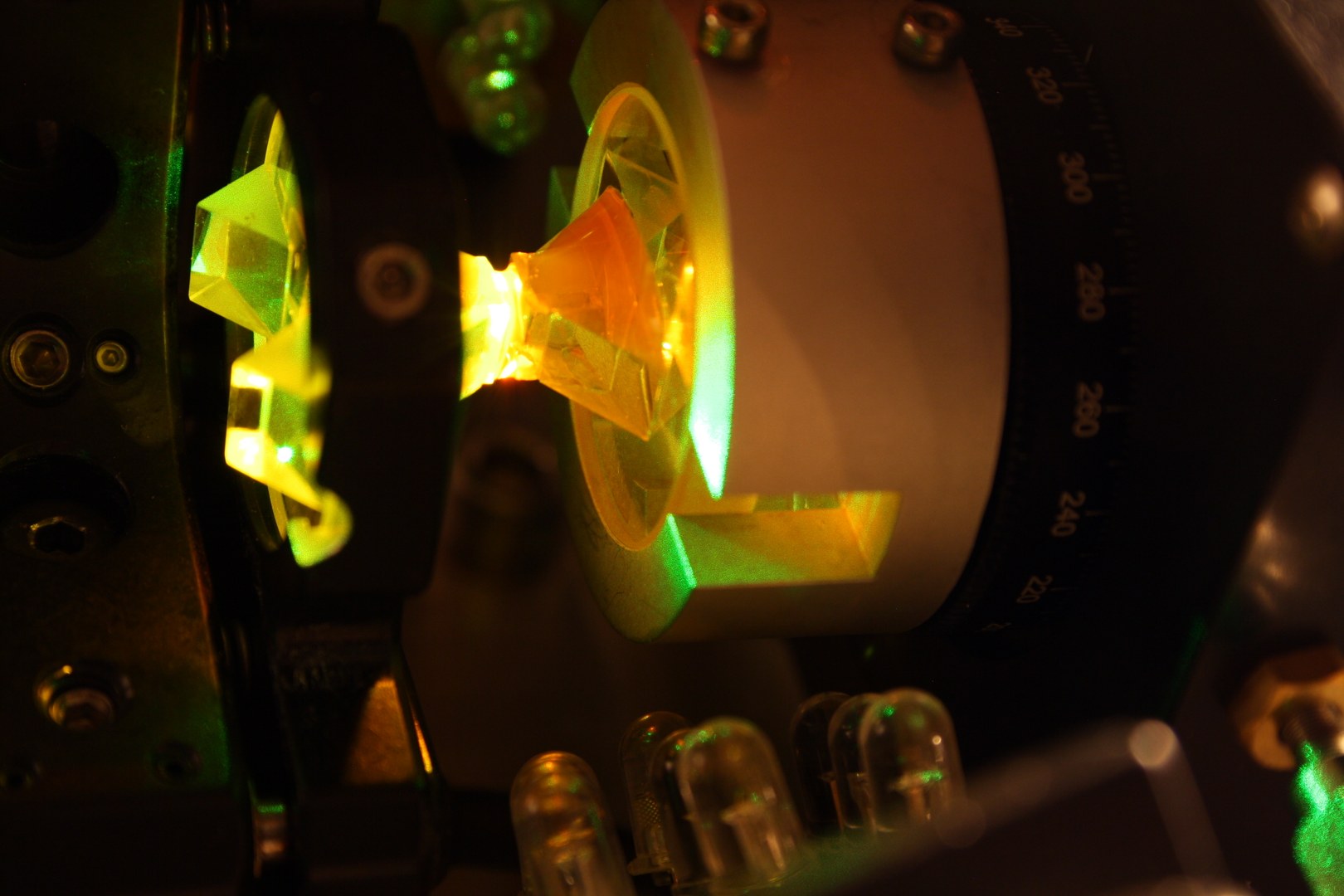For the first time, we have now measured the response spectrum of a photon BEC using time-periodic driving. This has enabled them to observe the elementary excitation spectrum of such a weakly coupled light-matter system. Our team created the photon BEC inside an optical microcavity, which was formed by two mirrors filled with a liquid dye solution. Through multiple emission and absorption cycles, the photons thermalized to the dye molecules at room temperature. Then the system was driven by irradiating the bath of dye molecules to which the photons couple with a time-modulated laser beam. The photons locked to the time-periodic modulation of the bath and entered an oscillating state. The researchers then observed that, for large BEC populations, a resonance appeared in the frequency-resolved amplitude spectrum. This feature can be understood as an elementary excitation of the coupled system, in which photons and molecules undergo collective dynamics stabilised by the interplay of driving and dissipation. Investigating the collective dynamics for different photon numbers and strengths of the dissipation channels (molecule decay and cavity loss) enabled the team to predict a previously unseen cusp singularity in the state diagram of the system.
The demonstrated method of time-periodic driving of photon BECs is expected to be applicable to other quantum gases of light and matter (e.g. polaritons), and will serve as a benchmark for future studies investigating reservoir-mediated phenomena in quantum gases of light within complex potential landscapes.
Our paper on temporally-driven photon condensates appeared in PRL Periodic driving of a condensate reveals elementary excitations of photons coupled to a bath
A photon Bose–Einstein condensate (BEC) is a state of light in which photons occupy the ground state of an optical cavity when equilibrating with a material in thermal equilibrium — for example, molecules at room temperature. Due to the incoherent coupling between photons and molecules, the system exhibits new resonances, which can be linked to elementary excitations of the coupled system, which allow to gain deeper insight into the intricate link between coupling, drive and dissipation.

Dye-filled microcavity, the heart of the experiment
© F. Vewinger / Uni Bonn
Download all images in original size
The impression in connection with the service is free, while the image specified author is mentioned.

Dye-filled microcavity, the heart of the experiment
© F. Vewinger / Uni Bonn
Andris Erglis, Alexander Sazhin, Frank Vewinger, Martin Weitz, Stefan Yoshi Buhmann, and Julian Schmitt
Time-Periodic Driving of a Bath-Coupled Open Quantum Gas of Light
Phys. Rev. Lett. 135, 033603 (2025)
Article at PRL
